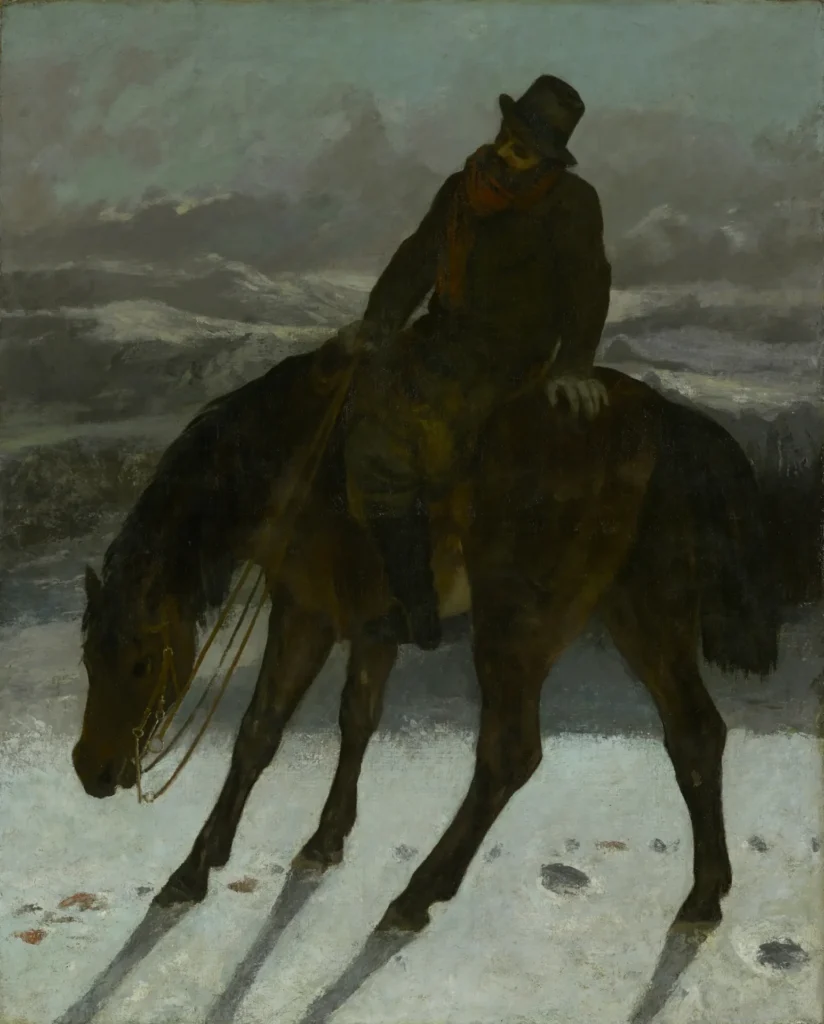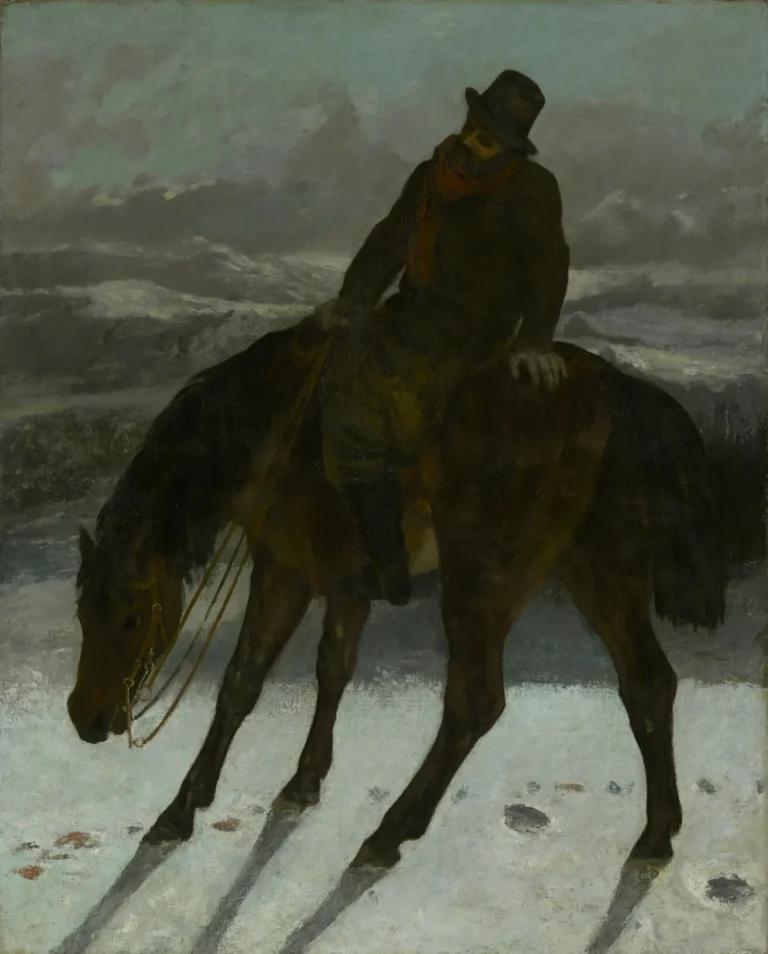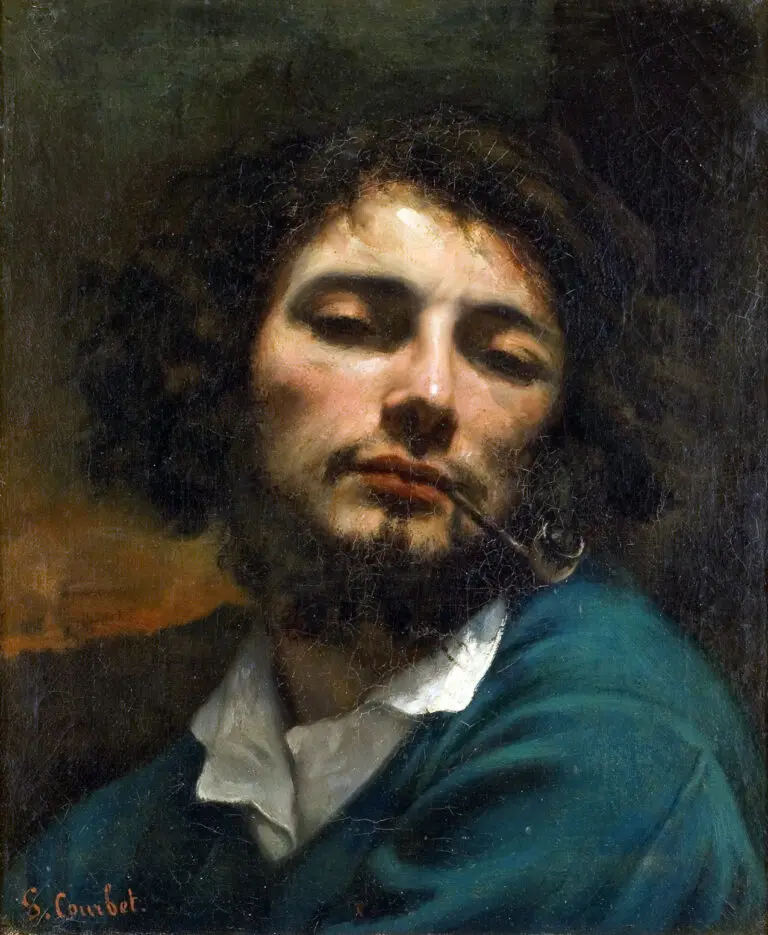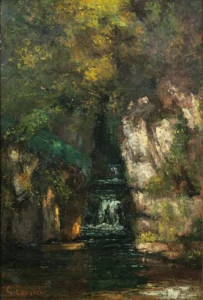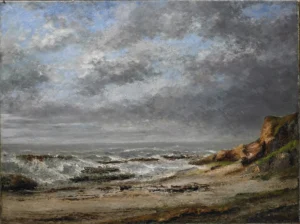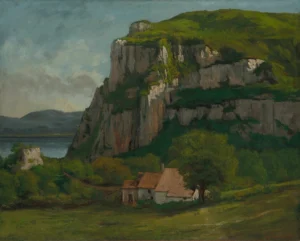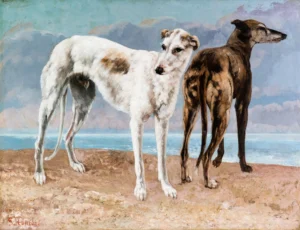Hunter on Horseback, Redcovering the Trail (1864)
Created between 1863 and 1864, "Hunter on Horseback, Redcovering the Trail" by Gustave Courbet exemplifies the Realism movement's dedication to authentic representation. The painting features a solitary hunter in a wintry landscape, which is marked by telltale bloody prints in the snow, indicating his pursuit of a wounded animal. Courbet's approach captures a profound moment of concentration against the cold and stark backdrop, revealing the intensity and drama of ordinary life. Although Courbet considered it a sketch rather than a fully realized artwork, it resonates with a sense of urgency and realism, indicative of the era's shift away from romantic styles.
1863-1864
About the Artwork
This artwork stems from Gustave Courbet's fervent belief in capturing truth and reality, characteristics that define the Realism movement. The painting reflects a personal engagement with nature and the raw elements of hunting, as it portrays the tension inherent in the chase. The choice of a winter landscape not only emphasizes the isolation of the hunter but also symbolizes the harsh realities of life. Despite Courbet’s designation of this piece as a mere study, it encapsulates his innovative approach to depicting life, where he aimed to show things as they are, devoid of embellishment or idealization. The emotional undertone of urgency and focus in the hunter’s gaze invites viewers to ponder both the thrill of the hunt and the somber realities of the animal's plight.
Did You Know
Liked what you see? Add it to your collection.
Enjoyed reading? Share it.
... continued
Artist and Style
The painting is the work of Jean Désiré Gustave Courbet, a French painter who was a leading figure in the Realism movement. Courbet was committed to painting only what he could observe, reflecting the realistic and often mundane aspects of life.
Composition and Theme
The painting depicts a hunter on horseback set against a pale, wintery landscape. The hunter is tracking a wounded animal, as indicated by the bloody prints in the snow. This scene captures a moment of quiet intensity and focus.
Status of the Work
Despite its size, Courbet classified Hunter on Horseback as a study or sketch rather than a finished work. It was listed under "studies and sketches" in the catalogue of his 1867 exhibition.
Creation Date
The painting is dated to 1863-1864, reflecting Courbet's ongoing exploration of realistic themes during this period.
Artistic Movement
The work is characteristic of the Realism style, which emphasized the accurate and detailed depiction of everyday life and environments, often without idealization or romanticization.




